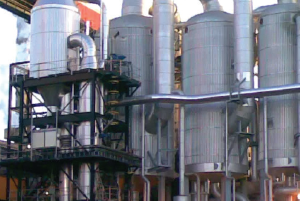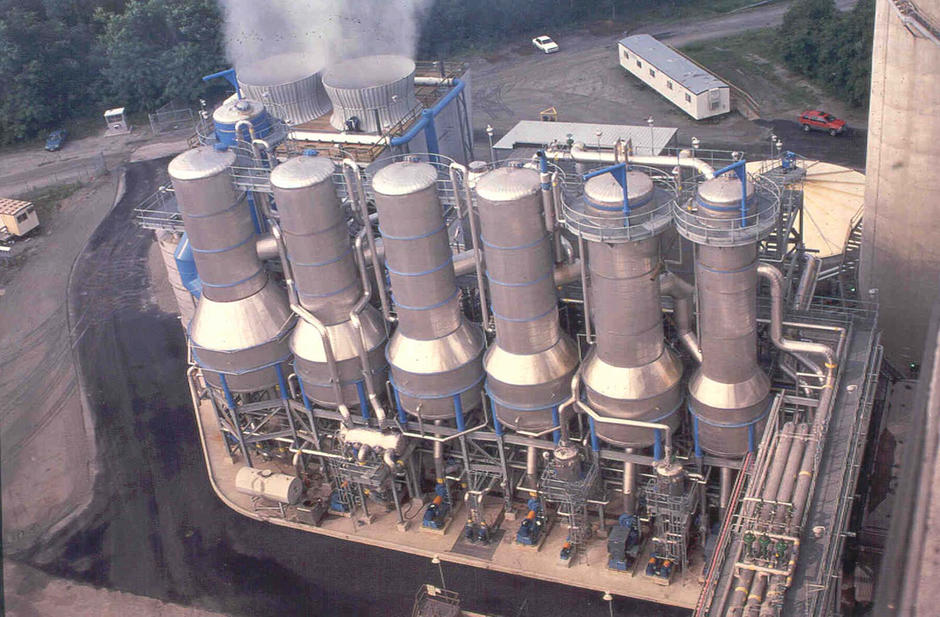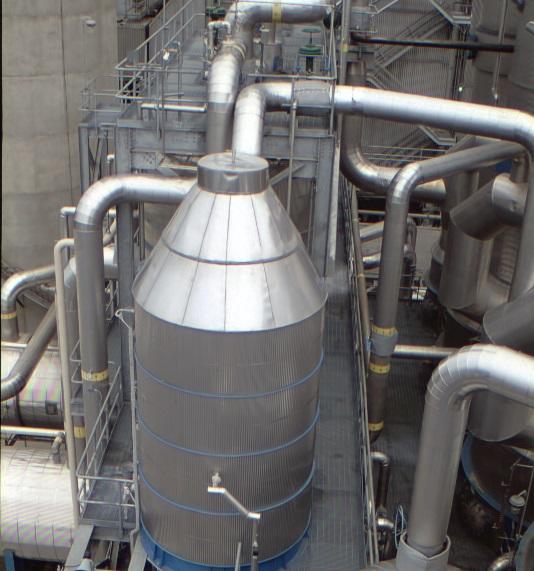Integrated Processes for Pulp & Paper Mills
Veolia has been a major supplier to the pulp and paper industry in North America since the 1960's for HPD® black liquor evaporation systems. Since then, Veolia has more than 450 installations worldwide for mills in Brazil, Indonesia, China, Japan, Australia, South Africa and several European countries. Many of the projects come from existing customers that are confident in the performance of previously installed systems at mills around the world.
Veolia Water Technologies works with several leading pulp and paper companies to troubleshoot existing equipment, upgrade older facilities and integrate new technologies to provide increased production efficiency, reduce energy consumption and recover valuable water and chemicals from the process.

Featured Technology: HPD® CRP (Chloride Removal Process)
What is a Chloride Removal System?
Non-process elements, including chloride and potassium from the wood and chemical makeup, accumulate in the recovery cycle, adversely impacting the operation of the boiler. Problems caused by this accumulation include plugging in the super-heater, corrosion in the recovery boiler and increased steam demand. Mills have addressed the problem by purging precipitator ash, which causes the added expense of soda makeup.
The Chloride Removal System dissolves precipitator ash in condensate and feeds it to an evaporative crystallizer. As the water evaporates, sodium sulfate and, depending on the ash composition, sodium carbonate crystals are precipitated. The resulting slurry is transferred to the centrifuge where the crystals are de-watered, washed, and returned to the black liquor for chemical recovery.
Veolia offers highly integrated, greenfield black liquor evaporation systems that drive efficiency for the recovery island as well as capacity expansions and modifications to existing facilities to optimize operations. This includes technical innovations such as Chloride Removal Process (CRP™) crystallization systems that reduce the accumulation of non-process elements (NPE's) in the recovery cycle or seven-effect evaporation trains that run on low-pressure steam are examples of the innovations that have led the industry.
Black Liquor Concentration
The thermal treatment of black liquor through evaporation achieves higher solids content and lower loads to the recovery boiler leading to the optimization of combined heat and power production. When integrated within the chemical recovery cycle, this technology promotes higher operational efficiencies while enabling the reuse of high-quality condensate.
Precipitator Ash Treatment
With the closing of process loops, chloride and potassium accumulate in the recovery cycle and result in scaling and corrosion in the boiler. Using highly-selective crystallization technologies, these non-process elements (NPEs) are removed while sodium is recovered to maximize soda chemical savings.
Veolia Technology and Process Integration
- Black liquor evaporators and concentrators up to 80% TS
- Black liquor heaters
- Condensate segregation
- Foul condensate stripping / methanol rectification systems
- NCG Collection and incineration
- Chloride Removal Process (CRP™) crystallizers
- Blow-heat recovery
- Soap collection and tall-oil acidulation
- Turpentine recovery
SMURFIT-STONE CONTAINER CORP.
The Client's Needs

The Smurfit-Stone Hopewell mill needed to replace the existing three evaporator trains that were currently in place at this facility with one very highly integrated system.
Due to the age of the current trains, MACT I compliance was necessary in any new design. System efficiency and reducing overall operation costs were also critical for the development of equipment and process design.
Project Description
This project, provided on a design-build basis, showcased the total project management approach and engineering capabilities of Veolia Water Technologies. The engineering disciplines utilized for this installation were in the areas of chemical, mechanical, electrical, civil/foundation and structural.
The entire scope of the project included construction of a new island that would be home to a six-effect, HPD® falling film evaporator train that would produce 74% product solids at an evaporation rate of 897k lbs/hr (407 t/h). The system would also process precipitator slurry, tall-oil brine and other recovered boilout liquor streams.
Other equipment supplied to the evaporator island included an HPD salt cake crystallizer, a soap skimming tank, cooling towers and chemical building, a foul condensate tank, a new MCC facility and control system. Outside of the island, a new indirect black liquor heater system was installed.
High Solids Concentration
The Enhanced High Solids Concentration (EHSC) system was an extremely integral part of the overall system. Veolia utilized HPD® Enhanced Forced circulation black liquor evaporation technology that was developed for producing higher total solids to the recovery boiler. This technology enables turbulence at high viscosity with lower recirculation rates, thus requiring less horsepower than conventional forced circulation.
The turbulence is created by using spiral rib inserts in the heat exchanger tubes. As a result, mixing of the bulk product solids increases heat transfer efficiency to minimize the laminar layer on the tube wall surface to greatly reduce fouling in the heater.

Precipitor Ash Treatment
Another key component of this system was the implementation of an HPD Chloride Removal Process (CRP™) system. Analysis of the precipitator slurry revealed high levels of chloride. If left untreated, unfavorable conditions could develop such as plugging of the super heater, corrosion in the recovery boiler and increased steam demand.
The CRP system removes non-process elements such as chloride and potassium that accumulate in the recovery cycle while recovering sodium to reduce chemical makeup demand. Removal of these elements via the CRP, rather than purging the raw precipitator ash, reduces the amount of purge to achieve the same results.
The Results
This project reflected the total project approach and engineering capabilities of Veolia Water Technologies. All facets of the new evaporator island at the Smurfit-Stone Hopewell, VA mill were designed and built with one point of responsibility.
Designed production rates and operational targets were reached by use of a highly integrated process solution utilizing HPD® black liquor evaporation technology. MACT I compliance was attained through optimum condensate segregation that produced high-quality water for reuse in the mill. The evaporator system and peripheral equipment installed proved to be a success.



